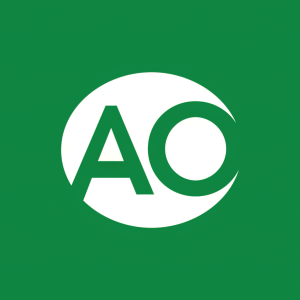Welcome to our dedicated page for A O Smith SEC filings (Ticker: AOS), a comprehensive resource for investors and traders seeking official regulatory documents including 10-K annual reports, 10-Q quarterly earnings, 8-K material events, and insider trading forms.
AO Smith’s water heaters and boilers may look straightforward on the showroom floor, yet the company’s SEC documents reveal far more—raw-material cost swings, energy-efficiency mandates, and growth dynamics in China and India all flow through its reports. Those details matter when you want to gauge margins or understand how a steel-price spike could affect profitability.
Stock Titan deciphers every AO Smith SEC filing the moment it hits EDGAR. Our AI-powered summaries translate dense 10-K language into plain English, flagging segment revenue, warranty reserves, and R&D outlays in seconds. Need the latest AO Smith quarterly earnings report 10-Q filing? It’s here with side-by-side comparisons. Tracking AO Smith insider trading Form 4 transactions? Real-time alerts highlight executive stock moves so you never miss a signal.
Each document answers a different investor question, and we surface the right one fast:
- Form 4 insider transactions real-time—spot buying or selling before material events
- Annual report 10-K simplified—see how raw-material costs affect heater margins
- Proxy statement executive compensation—review pay tied to energy-efficiency milestones
- 8-K material events explained—understand factory expansions or supply-chain updates
Whether you’re comparing segment trends, monitoring AO Smith executive stock transactions Form 4, or simply seeking understanding AO Smith SEC documents with AI, our platform keeps you ahead with comprehensive coverage and concise insight.
A. O. Smith Corporation executive James F. Stern, Executive Vice President of Corporate Development, Strategy & Secretary, reported a change in his holdings of A. O. Smith common stock. On 12/01/2025, he made a transaction coded "G," which is identified as a bona fide gift of 2,500 shares at a reported price of $0. After this gift, he beneficially owns 96,284 shares of A. O. Smith common stock in direct form. This is a routine insider filing that discloses a non-sale transfer of shares.
A. O. Smith Corporation announced it signed a definitive agreement to acquire LVC Holdco LLC, known as Leonard Valve, for $470 million, subject to satisfaction of customary closing conditions and receipt of regulatory approvals.
Leonard Valve, together with its Heat-Timer brand, designs and manufactures thermostatic and digital mixing valves and temperature control solutions used in commercial and institutional applications. The company also posted transaction slides and a news release as exhibits.
State Street Corporation filed a Schedule 13G reporting passive ownership in A. O. Smith (AOS)5,453,729 shares beneficially owned, representing 4.8% of the class as of the event date 09/30/2025.
State Street reports 0 sole voting power and 3,603,540 shared voting power, along with 0 sole dispositive power and 5,453,238 shared dispositive power. The filer is classified as a HC (parent holding company), with investment adviser subsidiaries including SSGA entities. The certification states the securities were acquired and are held in the ordinary course of business and not to change or influence control.
The Vanguard Group filed Amendment No. 16 to Schedule 13G reporting beneficial ownership of 14,412,842 A. O. Smith (AOS) common shares, representing 12.61% of the class as of 09/30/2025.
Vanguard reports 0 shares with sole voting power and 635,487 with shared voting power. It holds 13,443,781 shares with sole dispositive power and 969,061 with shared dispositive power. Vanguard states the securities are held in the ordinary course and not for the purpose of changing or influencing control.
Vanguard notes its clients, including registered investment companies and other managed accounts, have rights to dividends or sale proceeds tied to these securities, and no other person’s interest exceeds 5%.
A. O. Smith (AOS) reported Q3 2025 results with net sales of
Year to date, sales were
North America segment sales rose to
A. O. Smith (AOS) reported an insider equity award on a Form 4. Officer Paul J. Jones (SVP, GC & Chief Compliance Officer) received 2,200 restricted stock units on 10/13/2025 under the A. O. Smith Combined Incentive Compensation Plan, a transaction exempt under Rule 16b-3.
Each RSU represents one share of common stock and will vest on 10/13/2028. Following this grant, Jones beneficially owns 5,730 derivative securities (RSUs), held directly. The grant price is listed as $0, consistent with RSU awards.
A. O. Smith (AOS) reported a grant of 22,035 restricted stock units to Christopher T. Howe, SVP and Chief Digital Information Officer, on
A. O. Smith (AOS) initial Form 3 filed for Christopher T. Howe reports that the reporting person, identified as a Director and SVP Chief Digital Info Officer, does not beneficially own any securities of the issuer. The event date triggering the filing is 10/08/2025 and the filing was signed on 10/09/2025 by an attorney‑in‑fact. This is a routine initial disclosure showing no direct or indirect holdings disclosed on the form.
A. O. Smith Corp (AOS) reporting person Paul J. Jones, SVP, GC & Chief Compliance Officer, filed an initial Form 3 disclosing restricted stock units. The filing shows 1,545 RSUs granted 02/12/2024 vesting 02/12/2027 and 1,985 RSUs granted 02/10/2025 vesting 02/10/2028. Each RSU converts to one share at settlement, for a total of 3,530 RSU-equivalent shares reported as direct beneficial ownership. The Form 3 is dated 10/01/2025 and was signed by an attorney-in-fact.


